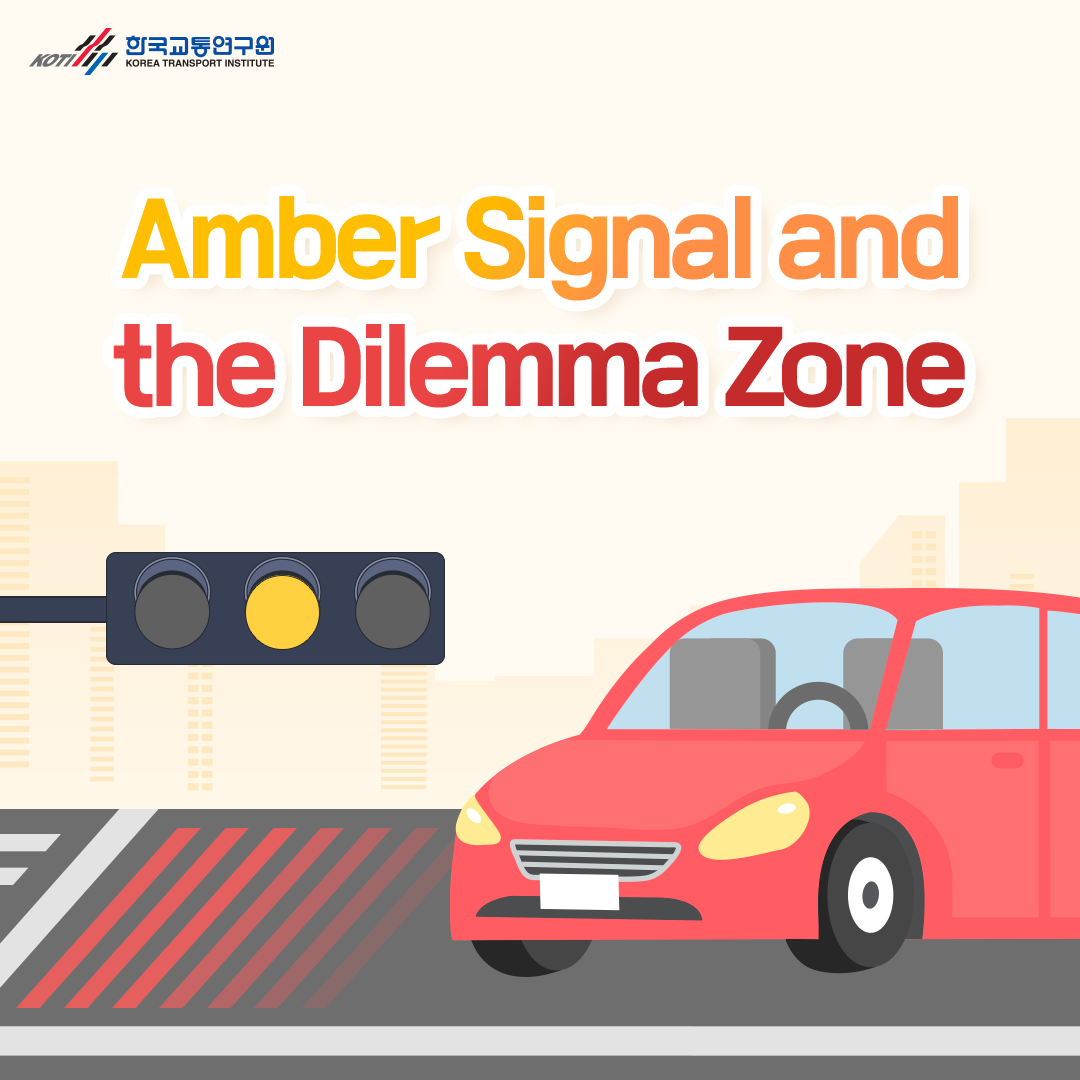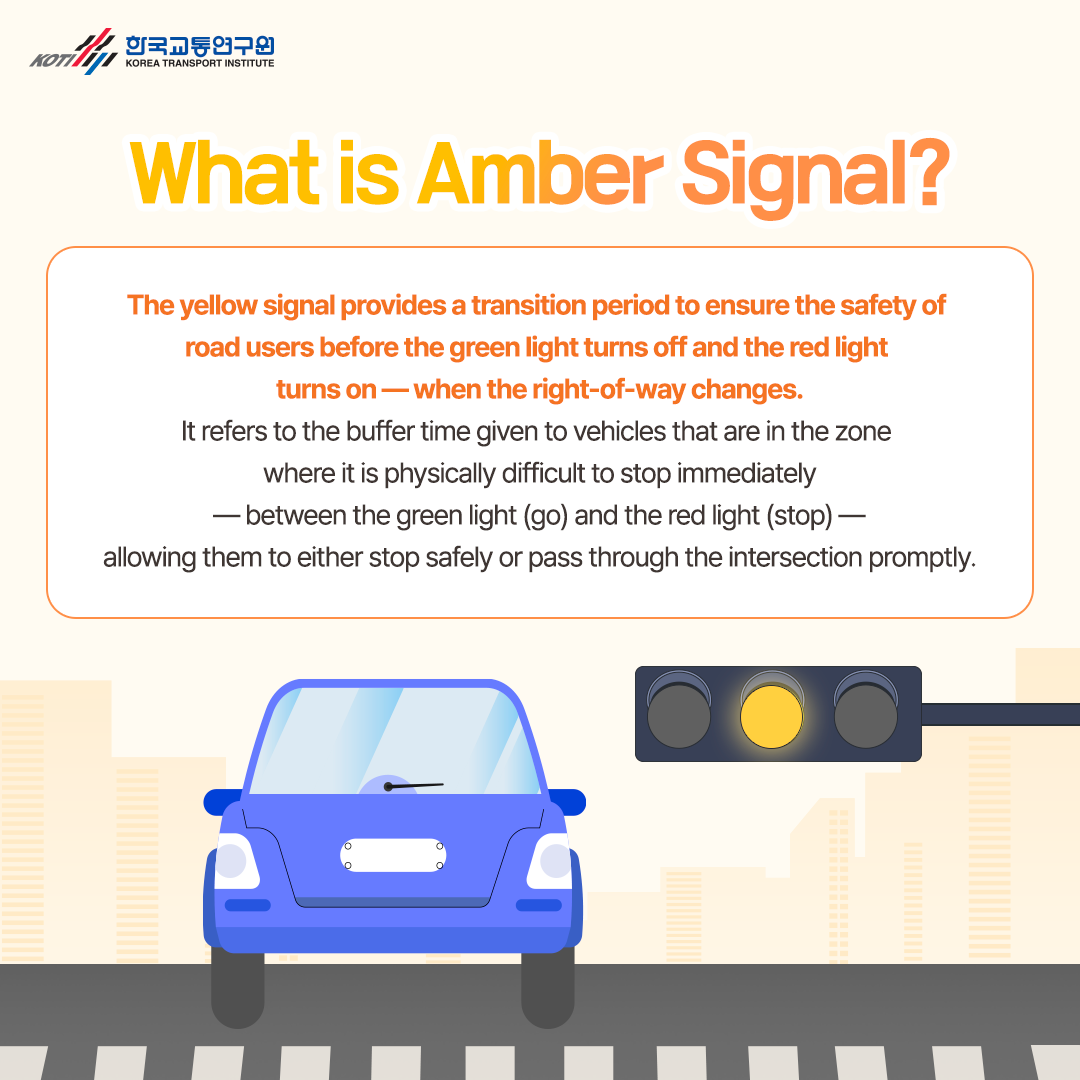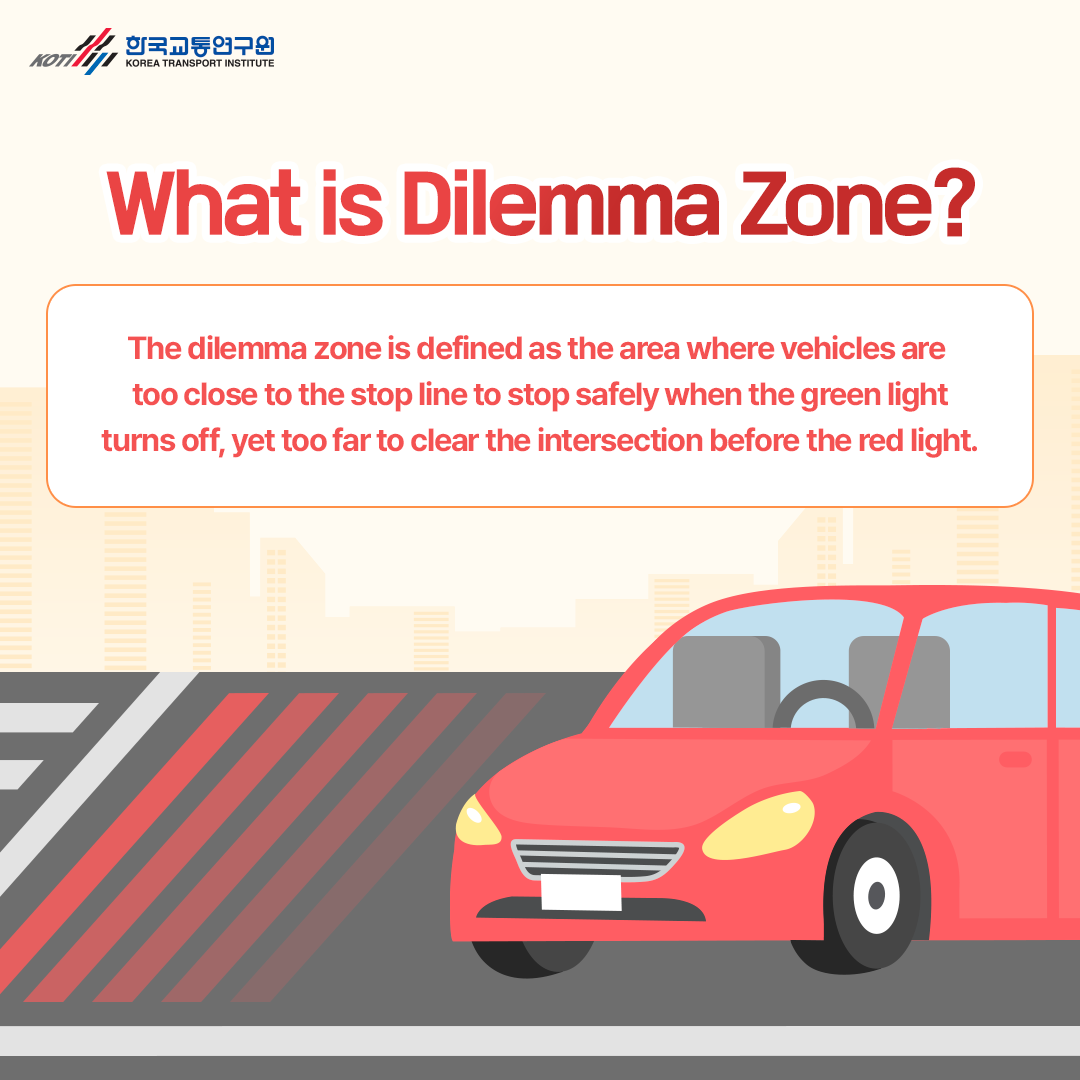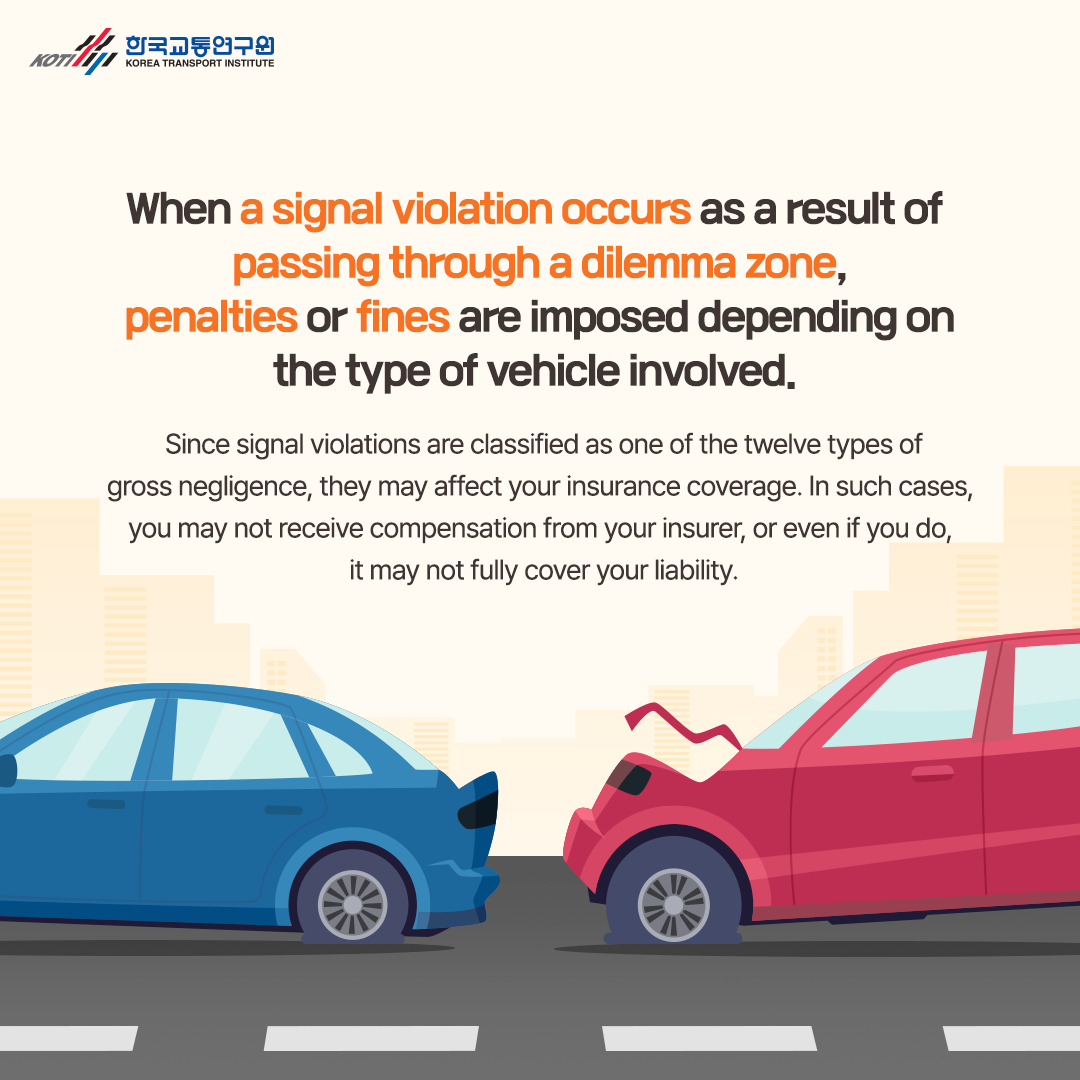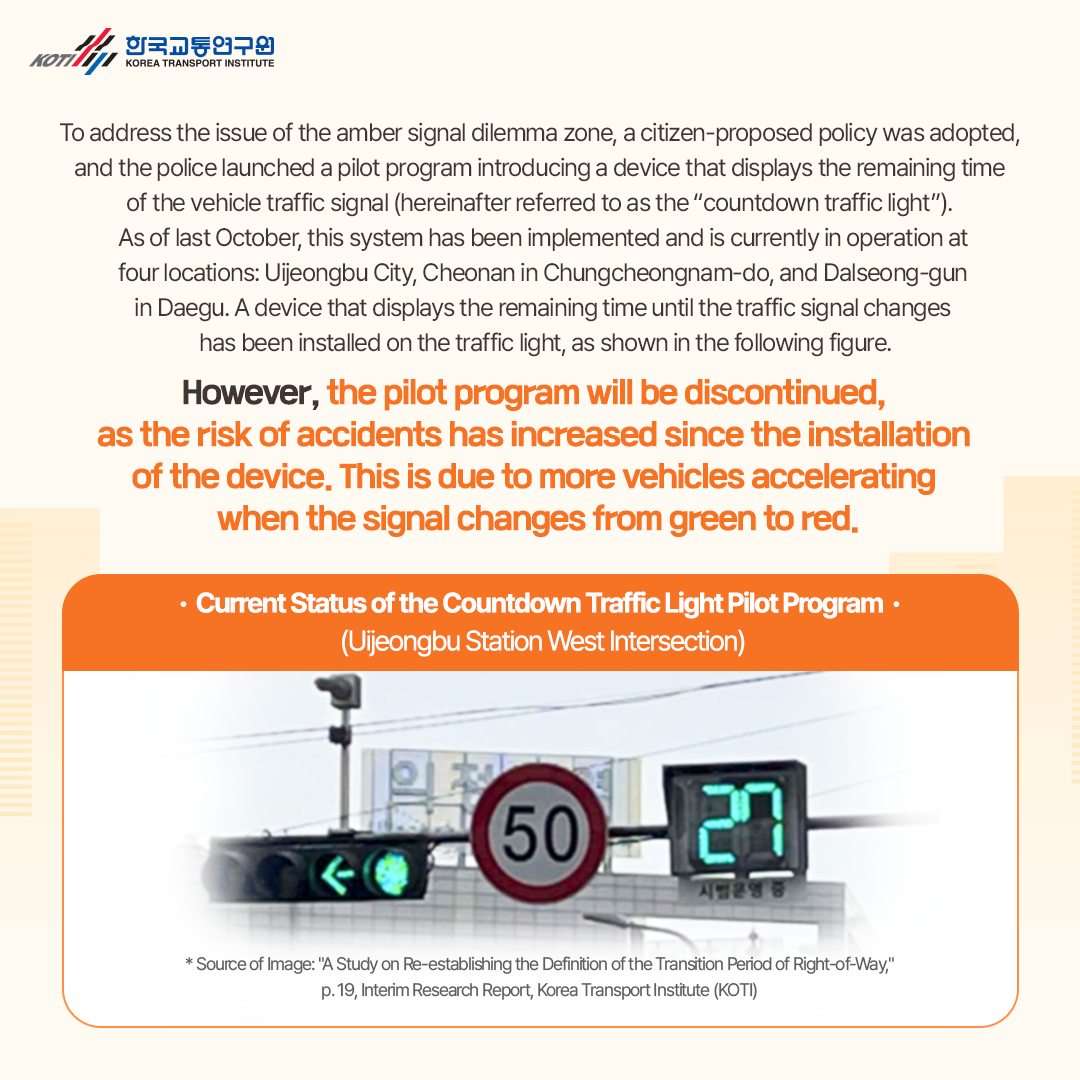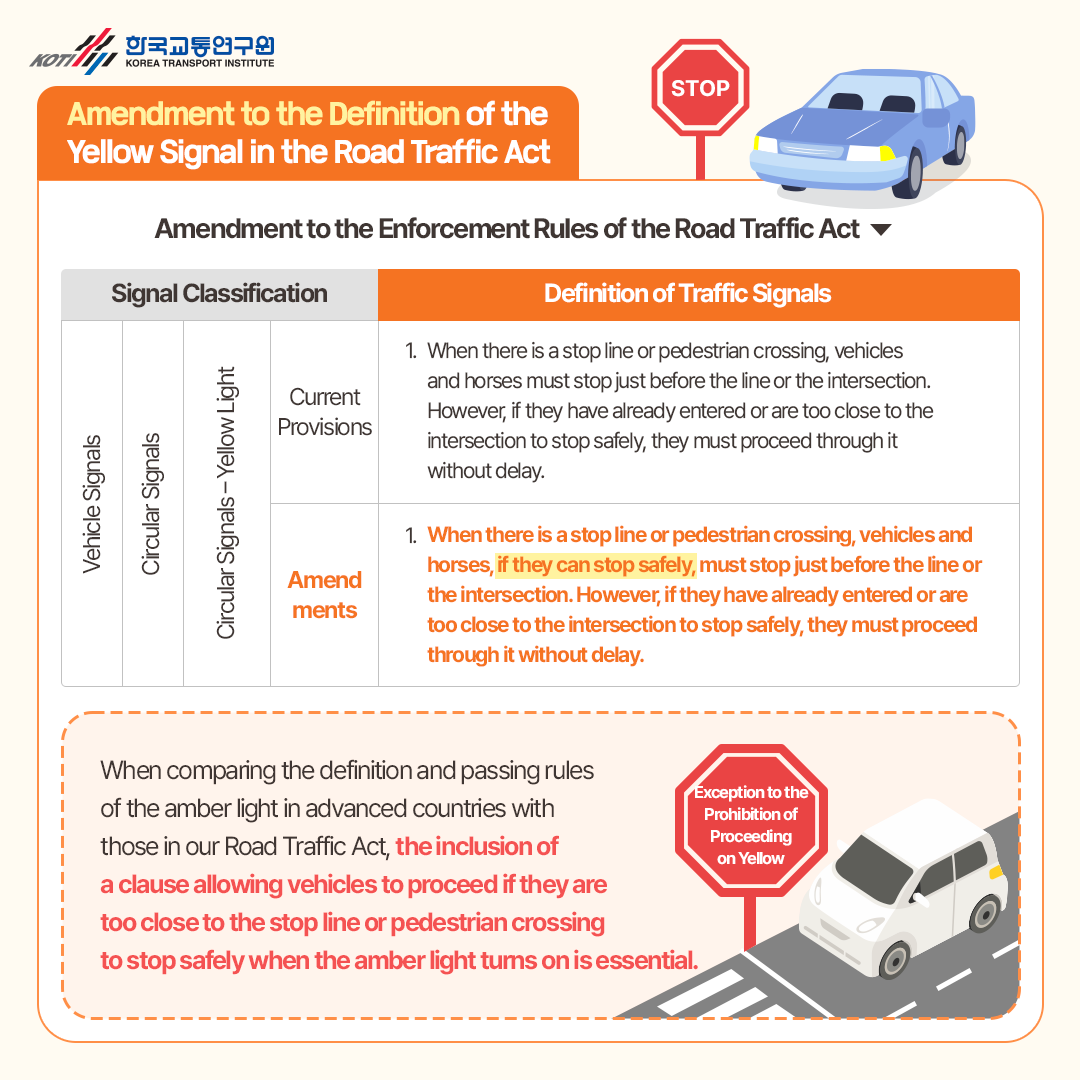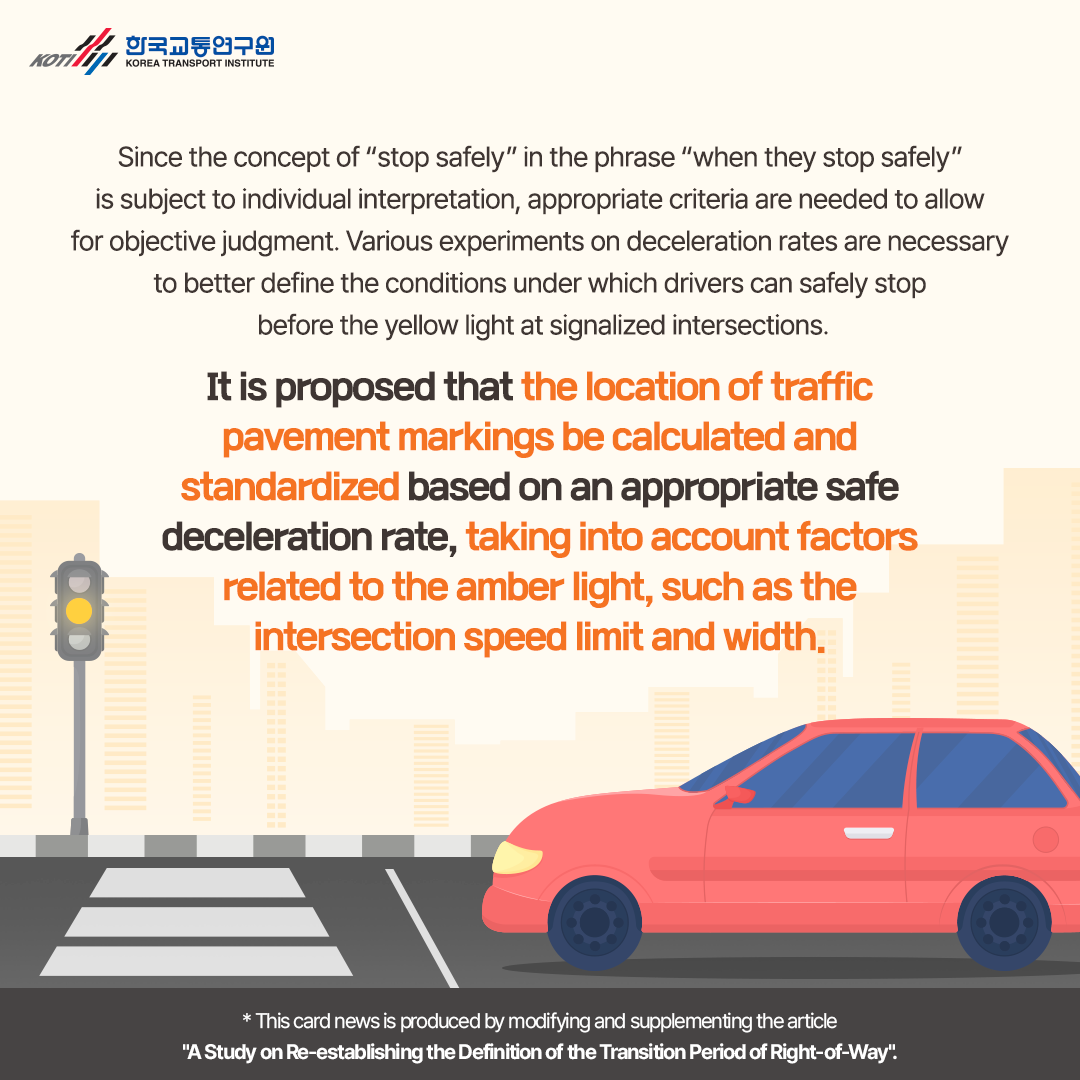Card News

NEWS
KOTI - Korea Transport institute
Feeds and Updates
Amber Signal and the Dilemma Zone
May 26 2025
-
[Amber Signal and the Dilemma Zone]
# What is Amber Signal?
The yellow signal provides a transition period to ensure the safety of road users before the green light turns off and the red light turns on — when the right-of-way changes. It refers to the buffer time given to vehicles that are in the zone where it is physically difficult to stop immediately — between the green light (go) and the red light (stop) — allowing them to either stop safely or pass through the intersection promptly.
# What is Dilemma Zone?
The dilemma zone is defined as the area where vehicles are too close to the stop line to stop safely when the green light turns off, yet too far to clear the intersection before the red light.
The amber signal timing is calculated to minimize or eliminate dilemma zones.
-The distance from a vehicle approaching the intersection to the stop line at the moment the amber signal is activated is denoted as x in
-The distance required for a vehicle to pass through the intersection—when it is too close to the stop line to stop safely—is expressed as the sum of d (the distance to the stop line at the moment the amber light turns on), w (the width of the intersection), and L (the length of the vehicle).
-As illustrated in, the dilemma zone arises when d is less than x, meaning the vehicle cannot stop safely. Stopping distance at the moment the amber light turns on / Passing distance when the vehicle is unable to stop at the onset of the amber signal /Dilemma zone To eliminate the dilemma zone, the amber signal is designed so that the stopping distance x is equal to the passing-through distanced.
Challenges Related to Amber Signal Operation in Korea
According to a comparative test on stopping distance and elapsed time at varying speeds conducted by KOTI’s Traffic Safety Experience Center, the required stopping times for driving speeds of 50 km/h, 60 km/h, 70 km/h, and 100 km/h—as shown in the following figure—are approximately 2.46 seconds, 3.58 seconds, 5.90 seconds, and 10 to 11 seconds, respectively. However, in practice, most signalized intersections provide only 3 seconds of amber time, regardless of vehicle speed. As a result, the likelihood of a dilemma zone occurring is quite high, especially when considering the lane width of typical intersections.
When a signal violation occurs as a result of passing through a dilemma zone, penalties or fines are imposed depending on the type of vehicle involved. Since signal violations are classified as one of the twelve types of gross negligence, they may affect your insurance coverage. In such cases, you may not receive compensation from your insurer, or even if you do, it may not fully cover your liability.
To address the issue of the amber signal dilemma zone, a citizen-proposed policy was adopted, and the police launched a pilot program introducing a device that displays the remaining time of the vehicle traffic signal (hereinafter referred to as the “countdown traffic light”). As of last October, this system has been implemented and is currently in operation at four locations: Uijeongbu City, Cheonan in Chungcheongnam-do, and Dalseong-gun in Daegu.
A device that displays the remaining time until the traffic signal changes has been installed on the traffic light, as shown in the following figure. However, the pilot program will be discontinued, as the risk of accidents has increased since the installation of the device. This is due to more vehicles accelerating when the signal changes from green to red. Current Status of the Countdown Traffic Light Pilot Program (Uijeongbu Station West Intersection)
Amendment to the Definition of the Yellow Signal in the Road Traffic Act
When comparing the definition and passing rules of the amber light in advanced countries with those in our Road Traffic Act, the inclusion of a clause allowing vehicles to proceed if they are too close to the stop line or pedestrian crossing to stop safely when the amber light turns on is essential.
Since the concept of “stop safely” in the phrase “when they stop safely” is subject to individual interpretation, appropriate criteria are needed to allow for objective judgment.
Various experiments on deceleration rates are necessary to better define the conditions under which drivers can safely stop before the yellow light at signalized intersections. It is proposed that the location of traffic pavement markings be calculated and standardized based on an appropriate safe deceleration rate, taking into account factors related to the amber light, such as the intersection speed limit and width.
* This card news is produced by modifying and supplementing the article "A Study on Re-establishing the Definition of the Transition Period of Right-of-Way"
